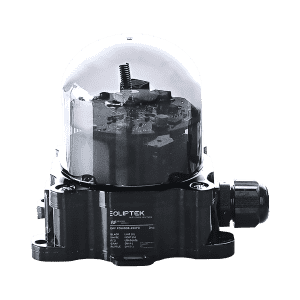
Efficient Management and Security with Stadium Automation Systems
The use of automation systems in stadiums offers a number of advantages with the ability to effectively manage large and complex structures. Thanks to the modular design, stadium automation systems are equipped with end units that can be customized to different needs. For example, lighting control with smart city lighting terminals, temperature regulation with RF and RS models, relay triggering and many other tasks are managed through a single system in different parts of the stadium. This allows stadium managers and staff to optimize lighting, regulate weather conditions and increase safety measures inside the stadium on game days and events.

Flexible and Effective Management
The wireless communication capabilities of the automation systems provide mobile control throughout the stadium. This allows staff to manage systems remotely, even while navigating the stadium or during emergency responses. The terminals, which have a communication distance of 1.5 km in open areas, can be positioned to cover the width of the stadium and provide high performance in closed areas, providing effective control of the entire stadium. These features offer stadium managers and operators energy savings, increased safety and overall efficiency benefits.









